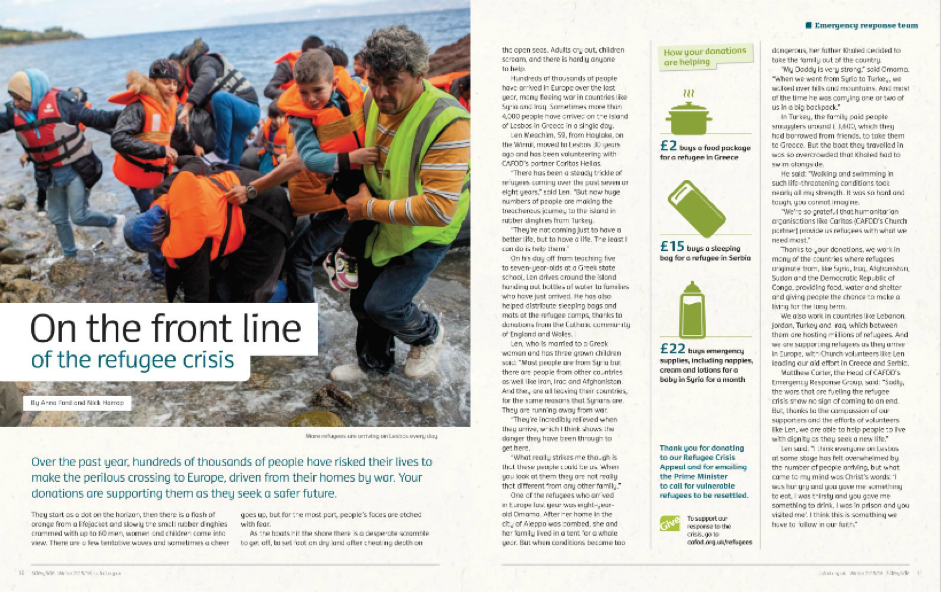CDE project 19 section 6: links across CDE projects
- Written by
- The Commission on the Donor Experience
- Added
- April 25, 2017
Links across CDE projects
Case studies
Accurately measuring the overall impact of a charity can be difficult, and can be particularly tricky to explain simply.
SolarAid found a compelling way of describing the way donations allowed them to produce outputs, and how that in turn translated into a positive effect for people.
SolarAid aims to combat poverty and climate change by providing solar-powered lights so families in Africa can earn, learn and feel safe after dark instead of using dangerous and costly kerosene lamps.
Their impact team came up with a simple measure that showed the charity was able to supply a solar light at a fair market price in Africa for every £3 donated, taking into account all their costs from fundraising to operations. Because costs have fallen with scale, the charity was able to show how that the cost per light has come down over time.
Then, using research with beneficiaries, the team looked at the impact of lights on families. As such, they were able to show that one solar light benefits six people, leads to one hour’s extra study each night, savings of $70 a year and averts over 200kg of CO2 a year.
The fundraising team put this to good use, creating a calculator that linked donations to lights, financial savings, extra study time and so on. That simple information allowed them to thank donors, give a real and immediate idea of impact, and create great material for donors and supporters to share on social media.

CAFOD launched a refugee crisis fundraising appeal in September 2015 in response to the refugee crisis in Europe.
As part of its feedback to supporters, CAFOD included an article about the impact its partners had made working on the Greek island of Lesbos, as well as other areas of the world in the January 2016 edition of Side by Side magazine, CAFOD’s in-house print publication, sent to 90,000 supporters three times per year.
The piece included details of CAFOD’s work on the frontline of the migration crisis, talking to volunteers about working with the charity’s partners on the ground with desperate people arriving on the shores of the Greek island of Lesbos last year. It included details about the £2 cost of a food package for a refugee in Greece, £15 for a sleeping bag and £22 for a package of emergency supplies for a baby.
Anecdotal feedback was that the response to the article was greater than they would usually receive for an article in the publication. Feedback from donors was warm and supportive, with people expressing thanks for the information about where their donations had been spent.
Donors contacting the charity said they were ‘inspired’ and ‘moved’ by the magazine, which they found ‘excellent, informative and humbling’. One said it ‘gives a sense of purpose to our donation’, while another commented ‘like CAFOD's work with refugees and knowing where donations are spent.’ Others said ‘Like seeing the good made by donations’, ‘Impressed with work in Colombia and refugee crisis’ and ’Stories of real people are the best’.

How a crisis appeal told the story of its success
When the Two Ridings Community Foundation launched an appeal to help victims of flooding, they were keen to let supporters know what had been achieved.
The Foundation launched their flood appeal in response to the York floods in December 2015. It was a new initiative for the foundation—responding to an immediate need—but within a few weeks, the appeal had raised £1.5 million to help people whose homes had been damaged by the floodwaters.
The appeal attracted many new donors to the Foundation and many online donations, so staff were keen to thank people and businesses for their generosity and tell them how money had been spent.
The Foundation has published a report outlining how they had made grants, detailing their spending and giving case studies of the people they had helped. Their stories are on the Foundation’s website and they produced a video of people who had benefitted, which was also sent to donors. You can read their report here.
They also ran an event for donors to thank them and introduce them to people who had received support and spoken frequently in the media about their progress.
Jan Garril, the Foundation’s chief executive, says
We had about a dozen case studies telling the story. People gave money not really knowing exactly what they were giving it to us for. We kept a really good record so we could show what we had done.
We did get the sense that donors were pleased to hear about this. They wanted to be kept informed and liked a gentler approach rather than a data-heavy approach. It was not about focussing on figures, it was all about the stories.


















